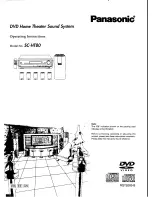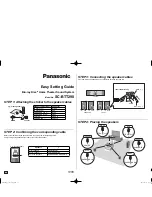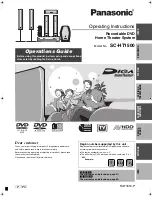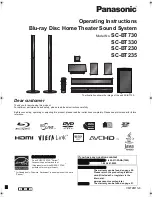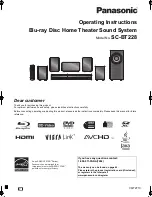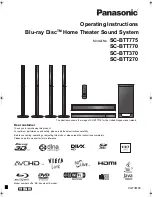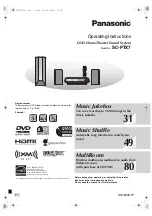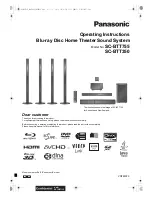
80
•
April 2007
•
Lighting
&
Sound
America
ARCHITECTURE
www.lightingandsoundamerica.com
•
April 2007
•
81
fire curtain, the smoke hatches, the
sprinklers—that you need if you’re
over that height.” The stage is
equipped with 29 single-purchase
counterweight linesets that include
pipes for lighting. There are also a
number of lighting positions on the
catwalks over the auditorium, as well
as a set of fixed concert lighting and
focused spots, all controlled by a
dimmer-per-circuit system. “The
control booth is at the back on the
orchestra level, which is something I
like to do rather than putting it up
high, because of all the traffic back
and forth,” says Cosler. “There’s also
the ability to plug in lighting and
sound control consoles in the cross
aisle during rehearsals and
productions, and have it even closer
if you want.” Pook Diemont and Ohl
was the rigging and drapery trade
contractor for the project.
The cross aisle connects with
ramps that give full access to the
stage and all parts of the house for
persons with disabilities. A pit lift can
extend the stage, provide an
orchestra pit, or increase audience
capacity with removable chairs. As
for the character of the space, Cosler
says, “They wanted a warm, glowing
luminous interior, which is what
everybody wants these days.”
Returning to the Wright influence,
he continues, “I like his Craftsman
style, and I thought a modern take on
that for this auditorium would be
right. The panels in the ceiling have a
certain asymmetry to them.” So do
the lighting units on the perimeter
shelf, which are designed as
translucent acrylic boxes broken up
by metal frames. Blue accents on the
ceiling and proscenium portal provide
an appealing alternative to black, he
adds: “You get more life and interest
if you put some color up there.”
Thinking big in Connecticut
Cosler’s experience with the Darien
High School project was different,
because he was subcontracted by
Herbert S. Newman and Partners, an
architectural firm with substantial
theatre design credentials. “Herb
talked about coming up with surfaces
and planes to define the room, and I
could see Sarah Martin, who was
working with me at the time, eating it
up,” the designer recalls. “I said, ‘You
should enjoy this, because you don’t
often get an architect talking about
design in pure, theoretical terms.’” He
explains that he was consulted about
finishes at Darien, but Newman and
his associate, Jim Elmasry, were
responsible for those treatments.
“When we came onboard, the box
was defined,” says Cosler of the
Darien theatre. “How the theatre was
laid out in the box had not been
defined. Our first pass was about
getting all the seats in, because they
wanted to accommodate 1,200. The
thing was to get everybody as close
and tight to the stage as possible,
and yet not have a big balcony
overhang.” Cosler’s solution was to
ring two rows of seating along the
sides of the theatre, on both the
orchestra and balcony levels; the
design fits in more seats and, at the
same time, gives the house an
enveloping feeling. “Normally, you
don’t have people there, but we did it
to increase the capacity and to
energize the side walls of the theatre
with people. We did the architectural
lighting on this space as well, so we
washed those walls with lighting.”
David Greenberg, of Creative
Acoustics, was in charge of the
room’s acoustical design, which
includes a tracking curtain system
completely covering the side walls,
unlike the partial treatment at
Watchung. “That’s a fairly large area,”
says Greenberg. “So the difference
between when they’re fully in and fully
out, between the reverberant and the
dry end, is significant.” The
acoustician cites the Darien
auditorium’s forestage reflector as a
vital piece of the acoustical design,
especially since the stage does not
have an orchestra shell. “It’s shaped
in such a way that it supports the
performers on the forestage whether
they’re on a stage extension or in the
pit, which is more of a depression in
the floor than in a pit in this case. The
reflector helps with communication
from musicians to actors and singers
on the stage, it projects sound from
the stage into the audience, and it
projects some of the audience sound
in an overhead direction back to the
Above: Cosler got 1,200 seats into the
Darien auditorium by placing two rows of
seating along the sides of the theatre on
two levels. Opposite: The Darien exterior.
PHOTO: ROBERT BENSON
performers, which can be useful.”
As it happens, Creative Acoustics
subcontracted Darien’s sound system
design to Dan Clayton, who specified a
range of equipment, including Audio
Technica and Shure microphones, a
Mackie 1604VLZ mixing console, Shure
P4800 signal processing, QSC CX-
series power amplifiers, Electro-Voice
FRX+940 loudspeaker clusters, and
Atlas FA-series under-balcony fill
loudspeakers, along with an intercom
system, AC power distribution, and
other elements. Cosentini Associates
took on a similar role for Watchung Hills
High School, providing a system design
that will be implemented in the future.
The lighting gear in the Darien facility
includes Strand CD80SV dimmers, a
Strand 300 console, and 59 Strand SL
Series ellipsoidal lighting fixtures,18
Altman 6" Fresnels, 21 Altman 8"
Fresnels, seven Strand Iris 3 cyclorama
wash units, and two Lycian followspots.
The gear package for Watchung
includes three ETC Sensor SR48+
dimmer racks with 500 micro-second
rise time dimming modules, ETC
Emphasis server with Express ECS
control console, ETC Unison
architectural lighting control system,
112 ETC Source Four ellipsoidals, 24
ETC Source Four PARs, 24 Altman 8"
Fresnels, 18 L&E Mini-Strips, and two
Lycian followspots.
As for the Darien stage, Cosler
says, “It does have a portal,
although we didn’t get as high a
proscenium as we did at
Watchung; still, it’s not as bad as
you sometimes see.” The stage
size and technical systems are
similar to those at Watchung, with
a dimmer-per-circuit system and
30 single-purchase linesets. Cosler
was also involved in designing the
facility’s black-box space, which is
to the side of the main auditorium,
along with a band room, shop, and
other support spaces. “We have a
pipe grid in there, a lighting
system, and chairs and platforms,”
he says of the black box, which
serves as a drama lab for students.
“We also have a window with
blackout shades, which I
suggested, because trying to teach
class in a black room all day can
get really depressing.” The
designer also specified a lighting
system for the TV studio, which is
in another building on the campus.
The community plays a role
Watchung and Darien’s theatre
projects were funded respectively
by local referendum and state
money, but, in both cases, the
community partnering placed the
facilities on a different scale. In the
case of Darien, says Cosler, “The
state was only going to fund 800
seats, but the community wanted the
additional 400 seats because of their
strong community concert
association and presenting
organization. They already had their
presenting apparatus in place, so the
minute this thing got built, it was
used by the concert association, by
dance schools, and by various other
outside people.” At Watchung,
“They’ve hired a technical director,
and also a person who’s in charge of
the overall fine arts department for
the school. They’ve been charged
with forming agreements, renting the
facility, and operating it on a zero-
sum basis. The money they bring in
goes back in to fund the
maintenance of the facility, and the
budgets required for the school to
mount their own productions.”
It indeed is a far cry from the
school auditoriums of yesterday or,
as Clayton, recalls, “the gymnatorium
where we built our own intercom
system out of car batteries.” What’s
driven the change? “A lot of things,”
says Cosler. “People expect a certain
level of production values now. To
deliver on that, you’ve got to have a
facility that will allow you to put in
moving lights and data control.” He
also thinks that “the general
evolution of every generation wanting
something better for their children”
plays a role. “In these wealthier
communities, having their own facility
and being able to do their own
productions is an amenity. They’re
really getting maximum use out of it,
because it’s being used for the
school, it’s being used for the
community, it’s where a big portion of
the community comes together
because of the children being in
school. If you were going to try to
build something like this to stand
alone, you would probably never be
able to get approval. So it makes a
lot of sense.”
PHOTO: ROBERT BENSON





